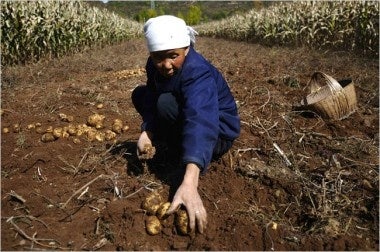"Seeds Of Change" Starting To Appear In Formerly Destitute Areas, Motivating Entrepreneurs To Develop Remote Countryside#

For years, China's hinterlands have benefitted little from the huge economic growth that has transformed the country's prosperous east coast, remaining underdeveloped and relying mainly on agriculture mainly as a result of their remoteness and often harsh terrain. If an article in today's Financial Timesis accurate, though, the next few years may be seen as a turning point for the mainly rural provinces in China's interior. As much of China's future growth will (or should) depend on domestic consumption and investment rather than foreign exports, the country's interior -- with its plentiful and comparatively cheap land and labor and delayed development (making it something of a "blank slate" for business) -- should, if development is done correctly, make it one of China's main engines of economic activity for decades to come. While this is obviously easier said than done, a number of motivated Chinese entrepreneurs have set out to do everything possible to make rural China prosperous, and -- given the right mix of time and incentive -- they might just be successful.
From James Kynge in today's FT:
Reforms in rural finance, the monetisation of agricultural land and social welfare appear poised to turn China's countryside from an indigent backwater to a driver of national economic growth over the next five to 10 years...Goldman Sachs has invested successfully in a leading sausage-maker. Wahaha Group, China's biggest beverage company, owes its buoyant earnings performance largely to the rural market, where it commands a 60 per cent share. Rural China has also been a main force this year behind the surging sales of cars with a capacity of under 1.6-litres.
The fact that China's second- and third-tier cities are the country's major hope for sustainable business is well established. But what about the country's fifth- and sixth-tier cities? With the sweeping changes already brought about by land privatization (perhaps downplayed by Chinese media, but a revolution in itself) and rapid commercialization of rural areas like Hubei, Zhejiang, Jiangsu, Shandong, Henan and Shanxi (as designated by the FT), still relatively impoverished and underdeveloped areas, the next 10 to 20 years could prove a windfall as companies invest in large-scale infrastructure projects (wind & hydro power plants), rail, housing, farms and heavy industry. The effect on common people's lives could (hopefully) be dramatic.
Much like America's continued economic strength was built largely on the development of its interior, China's best option for growth based less on exports will be to lift its central and western provinces out of the centuries-old poverty that remains a plague in many areas.